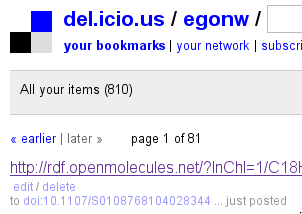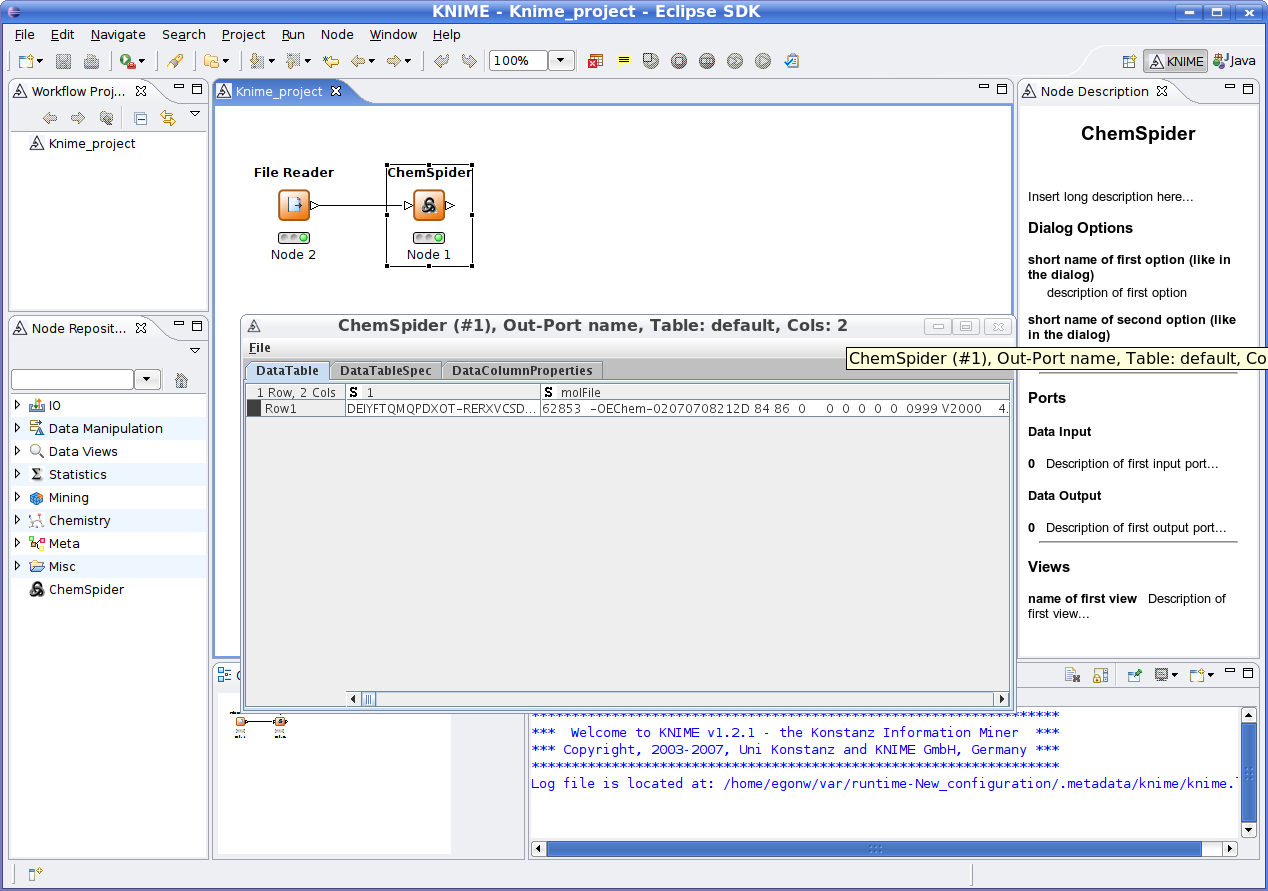-

Lunch at Nature HQ (with Euan, Joanna, Ian and Ålf)
On my way back from the Taverna workshop I visited Nature HQ, as Ian reported about on Nascent. It was a (too) short meeting, but very nice to meet Euan (finally; he wrote the postgenomic.com software which I use for Chemical blogspace), Joanna (whom I met in Chicago already, where she had two presentations, and is responsible for Second Nature), Ian (who works on Connotea, and commented on my tagging molecule blog) and Ålf (who works on Scintilla) and briefly Timo (who rules them all). BTW, I had a simple but delicious pasta.
-
ChemSpider: the SuSE GNU/Linux of chemical databases?
A molecular structure without any properties in meaningless. Structure generators can easily build up a database of molecules of unlimited size. 30 million in CAS, 20 million in ChemSpider or 15 million in PubChem is nothing yet. The value comes in when linking those structures with experimental properties.
-
Why ODOSOS is important
I value ODOSOS very high: they are a key component of science, and scientific research, though not every scientist sees these importance yet. I strongly believe that scientific progress is held back because of scientific results not being open; it’s putting us back into the days of alchemy, where experiments were like black boxes and procedures kept secretly. It was not until the alchemists started to properly write down procedures that it, as a science, took off. Now, with chemoinformatics in mind, we have the opportunity to write down our procedures in high detail.
-

CompLife2007, Utrecht/NL. Day 1 and 2
CompLife 2007 was held 1.5 weeks ago in Utrecht, The Netherlands. The number of participants was much lower than last year in Cambridge. Ola and I gave a tutorial on Bioclipse, and Thorsten one on KNIME. Since a visit to Konstance to meet the KNIME developers, I had not been able to develop a KNIME plugin, but this was a nice opportunity to finally do so. I managed to do so, and wrote up a plugin that takes InChIKeys and then goes of the ChemSpider to download MDL molfiles:
-
Taverna Workshop, Day 1 Update
The second part of the morning session featured a presentation by Sirisha Gollapudi which spoke about mining biological graphs, such as protein-protein interaction networks and metabolic pathways. Patterns detection for nodes with only one edge, and cycles etc, using Taverna. An example data she worked on is the Palsson human metabolism (doi:10.1073/pnas.0610772104); she mentioned that this metabolite data set contains cocaine :) Neil Chue Hong finished with an introduction on the OMII-UK which is co-host of this meeting.
-
Taverna Workshop, Hinxton, UK
I arrived at the EBI last night for the Taverna workshop, during which the design of Taverna2 is presented and workflow examples are discussed. Several ‘colleagues’ from Wageningen and the SARA computing center in Amsterdam are present, along with many other interesting people. This afternoon is my presentation.
-
How the blogosphere changes publishing
Peter is writing up a 1FTE grant proposal for someone to work on the question how automatic agents and, more interestingly, the blogosphere are changing, no improving, the dissemination of scientific literature. He wants our input. To make his work easy, I’ll tag this item
pmrgrantproposaland would ask everyone to do the same (Peter unfortunately did not suggest a tag himself). Here are pointers to blog items I wrote, related to the four themes Peter identifies.